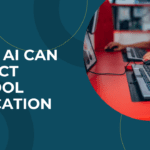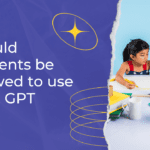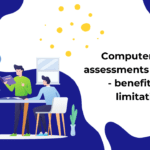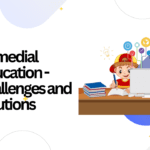Should students be allowed to use Chat GPT
Artificial intelligence (AI) has recently gained popularity for various uses, including those in education.
Recent AI developments, i.e. Chat GPT, are now a hot topic in the education system. The Chat GPT, an artificial language model created by OpenAI, can interact with people like a real person.
Most academic institutions are worried about the impact of this advancement in the education system. Most academicians think that how well it fits the student’s needs or deteriorates the thinking and decision-making skills of the student.
This invention of chat GPT made everyone think of their school days. For the mathematics subject, there are a lot of calculations to be computed. Students must learn tables 1 to 20 to perform the best calculations. Teachers and parents are also more concerned about this subject. But with the invention of the calculator, learning tables orally was diminished. And students started using calculators to perform arithmetic. The teacher also changed thier strategies in analyzing the student’s capabilities and learning outcomes.
Later, the usage of the calculator faded with the disruption of Google search. The students reading and learning habits had changed with the modern era solutions like smart tablets and Kindle.
The crucial thing that devasts the student’s thinking capabilities is copying and pasting the content developed by search engines. The teachers find it unable to evaluate the student’s abilities. The teachers diffused new student learning methods like reading passages and answering questions based on the passages.
Now it’s the time for Chat GPT, an AI-enabled tool which produces responses to the queries just like humans. Google search displays the relevant and most useful data on the web, whereas chat gpt generates well-researched information based on the text inputs by the users.
Most academicians are more worried that this invention would break down student thinking capabilities.
Chat GPT has many potential advantages and disadvantages for students. They are detailed in below sections.
Advantages of using chat GPT:
The use of chat GPT by students or in the educational system has several benefits, such as:

Quick access to information: Instant access to information is possible through Chat GPT for any subject, topic, or question that students may have.
Personalized Learning Experiences: Learning experiences that are personalized depending on the requirements and interests of the student are possible with chatbots that GPT drives.
Here I want to bring to your notice SETU an AI-enabled platform that personalized learning experiences and improved student engagement.
Increased engagement: Chat GPT can engage students in conversation, enhancing the interactive nature of the educational process.
24/7 accessibility: Students can chat with GPT at all hours of the day and night, enabling them to get assistance and support outside of class time.
Learning reinforcement: Chat GPT can help students remember the ideas they have learnt in class by offering additional explanations and examples.
Accessibility: Chat GPT can offer students with disabilities or those unable to attend conventional classroom settings an accessible educational experience.
Cost-effective: Without additional teachers or tutors, using chat GPT is a cost-effective method to give students additional support and resources.
Disadvantages of using chat GPT:
While employing chat GPT in the educational system or by students has many benefits, there are also some potential drawbacks to take into account:
Limited comprehension of context: Chat GPT models may occasionally fail to recognize the context of a student’s question or may respond in a way that is irrelevant.
Lack of personal touch: Chat GPT might not offer the same amount of support and personal touch compared to a real teacher or tutor.
Over-reliance on technology: Using chat GPT for learning too much may inhibit pupils from learning how to think critically and solve problems.
Reduced social interaction: A crucial component of the learning process is social interaction, which may be reduced when using chat GPT for instruction.
Technical restrictions: Chat GPT might not be able to handle difficult questions or discussions, and it might have restrictions on the kinds of queries it can answer.
Reliance on web connectivity: Chat GPT depends on a reliable internet connection, which isn’t always available in all places or at all times.
Conclusion:
Chat GPT would badly impact the students’ future education, and thinking is the first victim. One may not be able to predict the future complications of using it. But allowing students to utilize Chat GPT will depend on the circumstances and goals of their use, and it is crucial to ensure that such use is in line with the standards for academic integrity.







Leave a reply